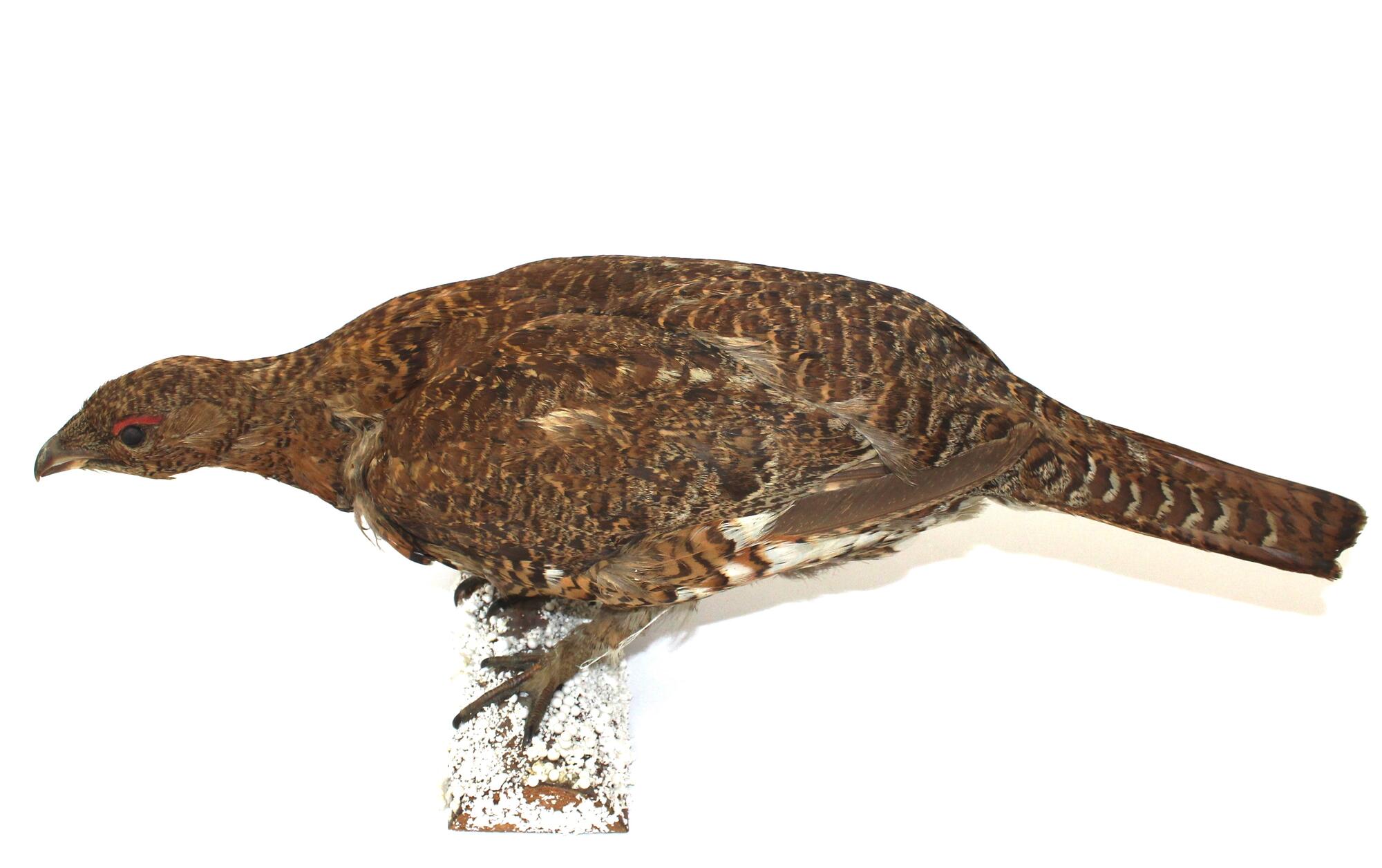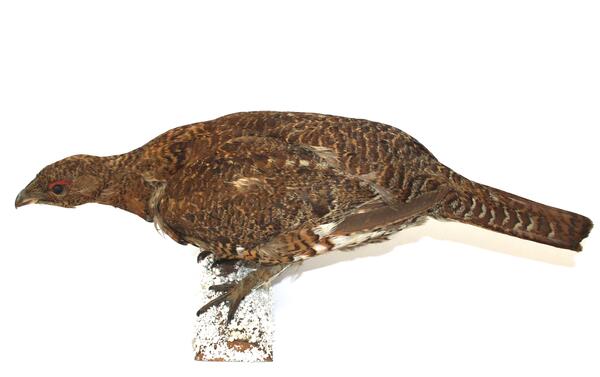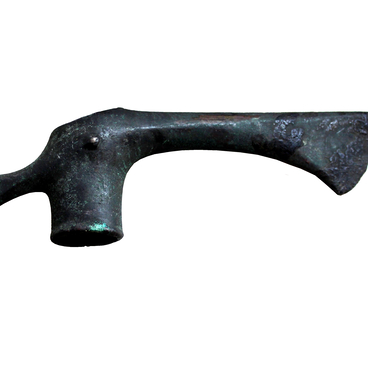Wood grouse is a heavy bird in the Phasianidae /-ˈanəˌdē/ family. Its Russian name ‘glukhar’ (the deaf one) refers to male specimen losing their hearing while lekking which is a benefit to hunters.
Stuffed female wood grouse
Время создания
1990s
Размер
61x21 cm
61 × 21 cm
61 × 21 cm
Техника
Taxidermy
Выставка
4
Открыть в приложении#7
Stuffed female wood grouse
#8
#5
#2
Females are much smaller than males and have less colorful plumage. They are under 80 centimeters in length and 2.5 kilos in weight. Female wood grouse resembles chicken. Its patchy and rather elegant plumage seamlessly involves brown, white, gold, red, and russet. The reason for this color range of the plumage of the bird is that it incubates eggs in a nest on the ground and, therefore, needs a good camouflage.
Young females start breeding at the age of three. They incubate 4–14 chicks within a month and, then, are responsible for protecting them. At the beginning of the incubation period, they have a very acute hearing and are able to get out of the nest quickly. Before hatching, they are more diligent and, despite the danger, remain in place bending down to their nests, which are typically hidden under the low branches of a young tree.
Eggs are hatched almost simultaneously. Then the hen and chicks leave the nest for they are the most vulnerable there. Newly-hatched chicks are totally covered with feathers yet not capable to maintain their normal body temperature which is 41°C. In cold and rainy weather, the hen warms her chicks.
Wood grouse hens with chicks often come out to the forest outskirts to seek anthills out in the fields and boundaries. The hen digs the anthill and, having found ant pupae, gathers chicks so they can feed on. Such nourishment ensures the quicker development of chicks. Subsequently, young specimen complement their ration with berries, grass, leaves add all the rest fed on by adult wood grouses.
Chicks develop quickly. Aged three or four, they are fledged enough already to perform short flights. From this time on, they start to sleep in trees. Hen protects her chicks to the last which often leads to her death. When danger is near, she rushes at the enemy to her own doom thus letting her chicks escape.
Young females start breeding at the age of three. They incubate 4–14 chicks within a month and, then, are responsible for protecting them. At the beginning of the incubation period, they have a very acute hearing and are able to get out of the nest quickly. Before hatching, they are more diligent and, despite the danger, remain in place bending down to their nests, which are typically hidden under the low branches of a young tree.
Eggs are hatched almost simultaneously. Then the hen and chicks leave the nest for they are the most vulnerable there. Newly-hatched chicks are totally covered with feathers yet not capable to maintain their normal body temperature which is 41°C. In cold and rainy weather, the hen warms her chicks.
Wood grouse hens with chicks often come out to the forest outskirts to seek anthills out in the fields and boundaries. The hen digs the anthill and, having found ant pupae, gathers chicks so they can feed on. Such nourishment ensures the quicker development of chicks. Subsequently, young specimen complement their ration with berries, grass, leaves add all the rest fed on by adult wood grouses.
Chicks develop quickly. Aged three or four, they are fledged enough already to perform short flights. From this time on, they start to sleep in trees. Hen protects her chicks to the last which often leads to her death. When danger is near, she rushes at the enemy to her own doom thus letting her chicks escape.
#9
Municipal Budgetary Institution Museum of Local History and Lore, Syzran
читать дальшескрыть
00:00
00:00
1x
Stuffed female wood grouse
Время создания
1990s
Размер
61x21 cm
61 × 21 cm
61 × 21 cm
Техника
Taxidermy
Выставка
4
Открыть в приложении
Поделиться



